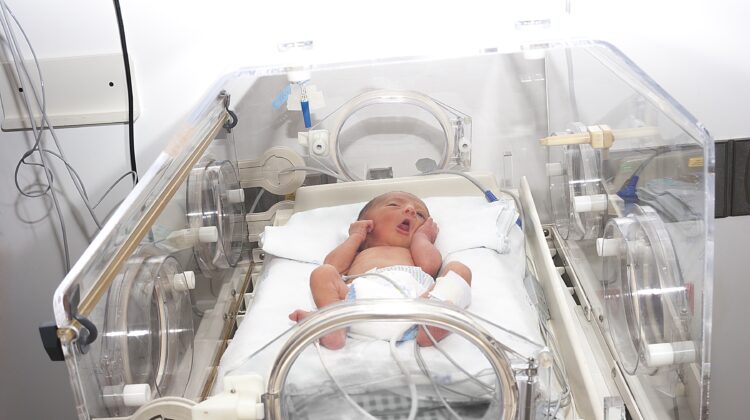
Our editor Maria Quinn, Concept Developer for Healthcare in Sweden, attended Euronoise in Crete – and here are her main takeaway points from the session: Room Acoustics.
Poster
NOISE IN NEONATAL INTENSIVE CARE UNITS: A SHORT REVIEW, by C.Carvalhais, M.V.Silva, J.Silva, A.Xavier,J.Santos
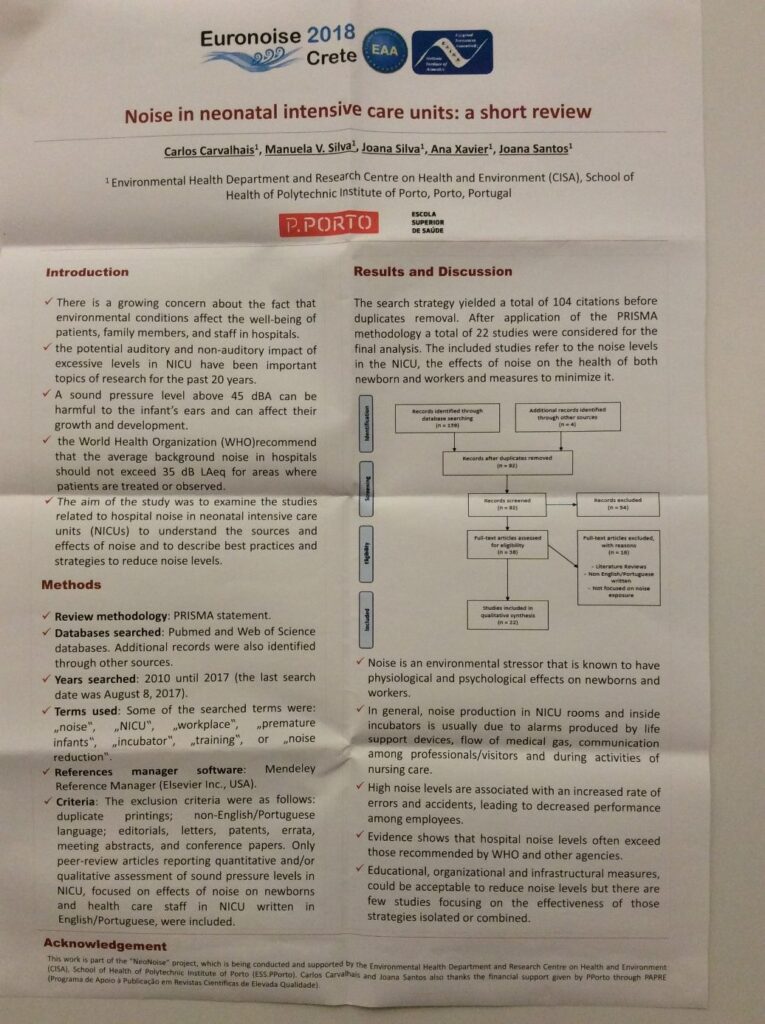
Noise affects newborns and worker in NICU rooms. Most of the noise is generated by life supporting devices, flow of medical gas, communication in the room and nursing care activities. High noise levels are associated with increased rate of errors and accidents!! Noise level often exceed those recommended by WHO.
Regular Session 18 – Room acoustics
S18-1 THE ACOUSTIC PROPERTIES OF SPATIAL ABSORBING SYSTEMS – A MODEL APPROACH, by Katarzyna Baruch (PL)
Spatial acoustic systems have been successfully applied in diverse interiors for years, especially when the use of an acoustic ceiling is impossible and a free access to the roof space is required. These systems are used in industrial production halls, sport facilities, multi-functional rooms and entrance halls equally successfully. The only difficulty in the use of spatial acoustic systems is that defining their absorbing properties is possible by measurement only.
Because of the costs involved in conducting this kind of research, the possibility to measure multiple setups is limited, so the producers usually provide acoustic parameters of a few chosen versions only. The presenter showed a number of different ways to display the systems as can be seen in the paper. It was pointed out that some untypical setups are favorable for the rate of number of elements and sound absorption of a system in comparison to the traditional distribution of elements. A consistency between different models and full size actual systems properties was also confirmed.
S18-2 REVIEWING CURRENT STANDARDS ON ROOM ACOUSTICS IN DEMENTIA CARE ENVIRONMENTS TO ESTABLISH A WORKABLE MEANINGFUL BASIS FOR INFORMING FUTURE RESEARCH. by Andrea Harman (UK)
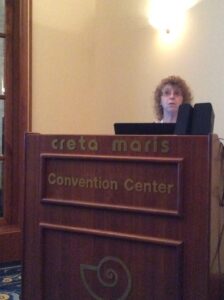
Call for action in Dementia care!
Andrea Harman, Concept Developer Healthcare (Ecophon UK) presented the need for standards considering the effect sound and noise has on the patient. Research and experience have shown noise to be challenging for many people with dementia, affecting their ability to filter sound, hear and understand speech, sleep and to process information.
This has led people with dementia to endure increased anxiety and stress and a reduction in social interaction, increasing isolation. Based on noise as a stressor, some room acoustic standards and guidance on reverberation time has evolved in this field; however, the different guidance documents available vary in suggestions as to what constitutes best practice and there appears to be little research supporting the efficacy of the levels stated in the various pieces of guidance. To make guidance more robust Andrea propose a single set of values on which to base further research into the effects of noise on people with mild and moderate dementia in a care environment.
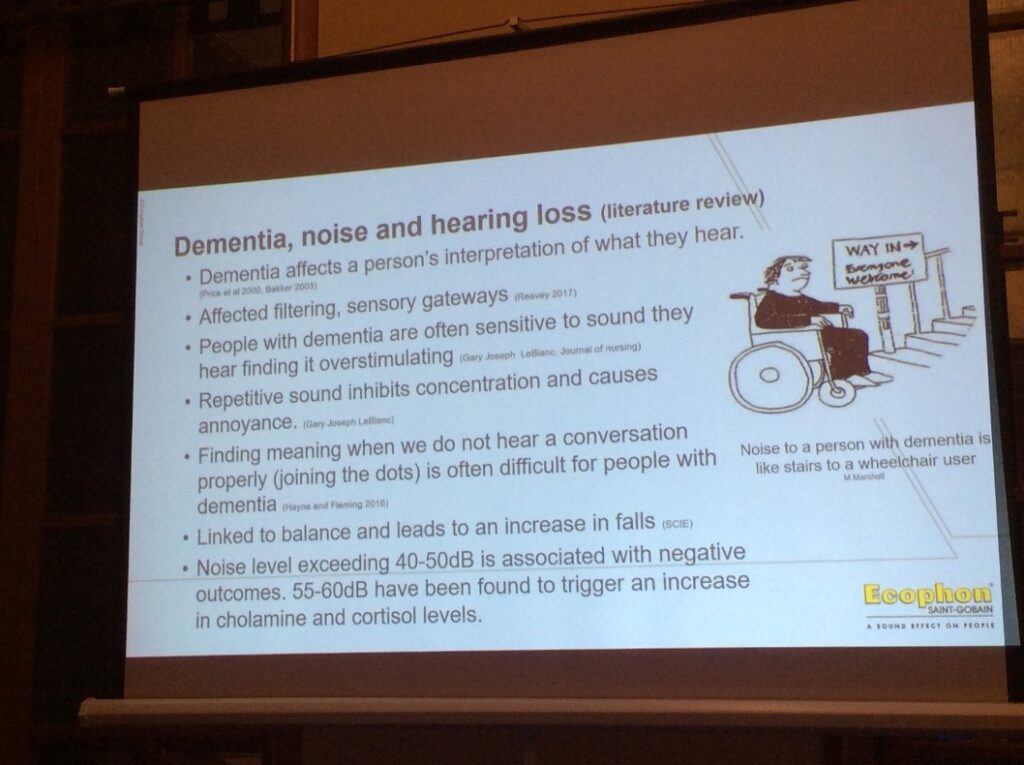
S18-4 ENERGETIC WAVE EQUATION FOR DIFFUSE SOUND FIELDS, by Prof Jean-Dominique Polack (FR)
The diffusion equation for modeling diffuse sound fields was proposed some fifty years ago on heuristic principles as an extension to Sabine’s diffuse field model, and still receives much attention. The authors of this paper developed the model one step further to provide the missing relations between sound intensity and sound energy. This introduces some extra terms that, in case of non-Sabine spaces (narrow or flat rooms), can be defined with the help of the boundary conditions in terms of absorption and scattering coefficients on the walls. For the two-dimensional case (open-space), numerical results are compared to measurements in real spaces. The comparison makes it possible to evaluate the absorption and scattering coefficients by an adjustment procedure.
S18-5 CHARACTERIZATION OF ACOUSTIC SCATTERING FROM OBJECTS VIA NEAR-FIELD MEASUREMENTS, by Antoine Richard (DK)
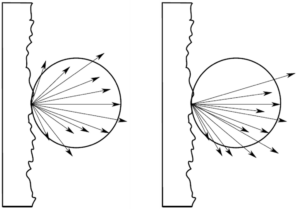 Acoustic scattering is defined as the disturbance of a given incident sound field due to an object’s shape and surface properties. The effect of scattering can be expressed in terms of a scattered sound field, which is calculated as the difference between the sound field when the object is present and the incident field without the object.
Acoustic scattering is defined as the disturbance of a given incident sound field due to an object’s shape and surface properties. The effect of scattering can be expressed in terms of a scattered sound field, which is calculated as the difference between the sound field when the object is present and the incident field without the object.
The scattered sound field obeys Sommerfeld’s radiation condition. Therefore, its radial dependence (spherical decay) and its angular dependence can be separated in the far-field. The sound field is measured on a closed arbitrary surface enclosing the object. The far-field pattern is estimated from an asymptotical formulation of the Helmholtz Integral Equation. It is possible to use either the total sound field or just the scattered part in the integral. Boundary element simulations show that the far-field patterns of different objects are correctly recovered, provided that the measurement points are less than half a wavelength apart.
(Read another article about scattering in rooms with acoustic ceilings here.)
S18-6 APPLIED MEASUREMENTS PROCESS FOR IMPROVING ROOM ACOUSTICS IN CHILDREN DAY-CARE CENTRE, by Nika Šubic (SL)
 Acoustic environment of day-care facilities is often unacceptable – reverberation times (RT) are usually higher than recommended, which has a negative effect on the equivalent sound pressure level (Leq). The main objective of the study was to find an acoustically suitable solution that would not present an economical strain or health risk for the users of the institution in question.
Acoustic environment of day-care facilities is often unacceptable – reverberation times (RT) are usually higher than recommended, which has a negative effect on the equivalent sound pressure level (Leq). The main objective of the study was to find an acoustically suitable solution that would not present an economical strain or health risk for the users of the institution in question.
Improving playroom acoustics may lead to a more comfortable and productive working and living environment. Previous research of room acoustics in children day-care centres showed that implementing sound absorbing materials into playrooms reduces the RT and Leq, which can then be even further lowered as a consequence of the Lombard effect.
A significant drop of almost 44% in RT from 0.92 s to 0.52 s (400 Hz – 2500 Hz) was measured after the installation of all acoustical elements. Leq dropped by 2.5 dB after the renovation. Conclusion: the applied measurements process proved as a fairly quick, economical and precise solution that produced quality results.
For more information about the session, please contact Maria Quinn.

